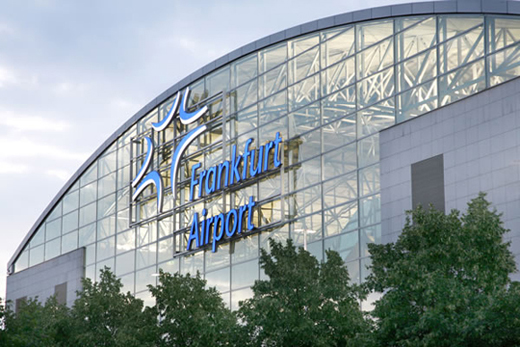No products in the cart.
Frankfurt Airport builds on momentum
 The introduction of a curfew that banned freighter flights during the night could not knock Frankfurt airport off its perch as Europe’s top gateway for air cargo, despite dire warnings that this would cripple the airport and send cargo to other European hubs. Nor can a decline in in cargo traffic, it seems.
The introduction of a curfew that banned freighter flights during the night could not knock Frankfurt airport off its perch as Europe’s top gateway for air cargo, despite dire warnings that this would cripple the airport and send cargo to other European hubs. Nor can a decline in in cargo traffic, it seems.
Frankfurt’s throughput dropped 2.3 percent to 2.1 million tonnes last year. The situation has not improved since. Numbers for February show a 1.4 percent decline in tonnage. Nevertheless, Fraport, the operator of Frankfurt Airport, said it is in expansion mode, looking to develop new cargo facilities.
The curfew did not help Lufthansa, the most affected carrier, and the slowdown in cargo is having an impact on its momentum. Last April the airline’s top management announced that it had decided to postpone plans for a new cargo center to replace its current hub, which has been in place since 1982, by at least two years. Originally, Lufthansa had targeted the opening of the new hub in 2018, but softer demand prompted management last year to decide that the existing setup would do for a while yet.
LH Cargo has declared that the new facility, which represents an outlay of a “mid-triple-digit-million euro sum,” remains a key part of its “2020 strategy,” but the design is not cast in concrete. While no decision on the go-ahead is expected before spring of 2017, a company spokesman comments that, in a parallel move, the company is developing alternative concepts to the proposed “LCCneo” center.
Fraport, on the other hand, is moving to expand its cargo area. It has put an area of 27 hectares up for tender to enlarge its “cargo city.” A decision is expected by the fall at the latest, according to Dirk Schusdziara, Fraport’s senior vice president of cargo.
Work has commenced on the airport’s third passenger terminal. This will bring more bellyhold capacity to the airport and increase Frankfurt’s network, he said. Given the importance of connectivity for the growth of cargo, the freight business will benefit from this, he added. The increased belly capacity is not likely to impact freighter activities, though, as Schusdziara said, he expects freighters to continue to haul the lion’s share of the flows on Frankfurt’s trunk routes, especially from Asia. Freighters carry about 60 percent of the airport’s tonnage.
Besides its connectivity, Fraport stresses its capability to handle freight that requires special processes, from live animals and hazardous materials to perishables and pharmaceuticals. Schusdziara said he also expects to benefit from the rise in e-commerce but noted that since Frankfurt is not an integrator hub, most of its B2C e-commerce will likely be moved by the postal service.
Higher on his radar than the movement of cargo is the electronic flow of data, as Fraport’s efforts to develop and improve its capabilities are going to focus largely on digitalization. “There is much room for improvement of efficiencies,” he said.
A central plank in this endeavor was the introduction of FAIR@Link, Fraport’s community system, in the spring of 2015. It was developed by IT provider Dakosy, which had pioneered a similar concept at the port of Hamburg. By enabling the electronic flow of data between participating companies, the system has helped users to speed up processing times both at delivery and pick-up of cargo at the airport.
Last year, the new system processed more than 40,000 air waybills, and Schusdziara said he expects to see
considerable growth again this year, as a number of forwarders have come on board in recent months.
According to one mid-sized German forwarder, the participants, so far, have all been larger players. For smaller companies the cost is rather high to justify participation, he argued, calling for a solution that can reduce the cost.
Schusdziara emphasized the importance of reaching along the supply chain, beyond the confines of the cargo city, citing the example of a trucking firm based in another German city that is hooked up to the system. Its forwarder clients see over the system when a truck is due to arrive at the airport and can obtain a slot for loading or unloading it. The truck’s arrival automatically triggers the customs clearance process.
The notion of achieving better efficiency by involving companies along the supply chain was a major factor in the formation of the Air Cargo Community Frankfurt two years ago. It currently comprises 38 members and runs working groups that cover temperature-controlled transport, processes, infrastructure, location marketing and community building.
For Schusdziara, another step to reach beyond the airport perimeter was a joint venture agreement with Worldwide Freight Services last year, under which the handler took a 51 percent stake in the airport operator’s freight handling subsidiary, Fraport Cargo Services.
“If you cooperate with others, you have a stronger network,” Schusdziara said, adding that the alignment with Worldwide Freight opens up new possibilities for Fraport.
















